How'd They Do That? Color Changing Glass
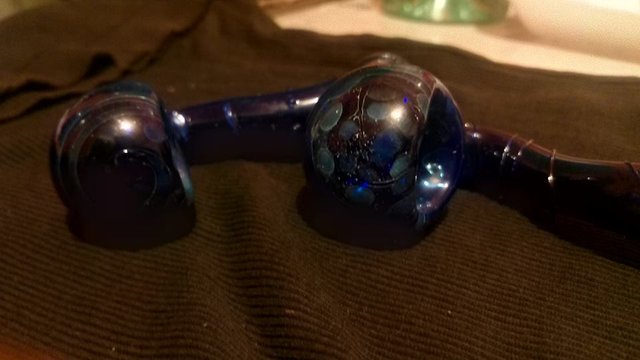
One of the coolest effects you can work with in glassblowing is with fuming of metals, like silver or gold. This was a technique discovered on accident by the pioneer pipe maker Bob Snodgrass. What at first was a mistake, eventually led into what's essentially it's own segment of the glassblowing world. This is the effect that makes it so glass can change color, and if you know how to do it you can achieve just about any color with silver, gold or them together in combination. Copper is used too for fuming, but not very often.
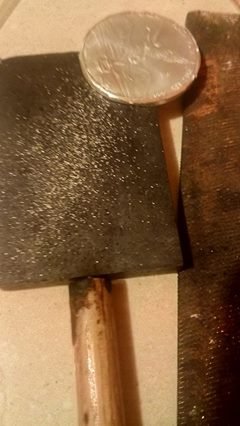
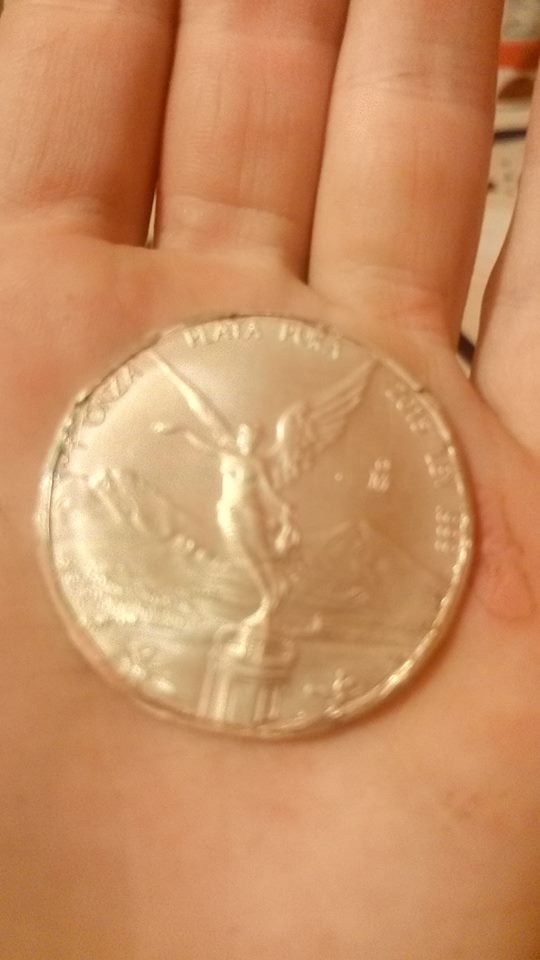
I use silver because it's versatile, cheap and easy to work with. Not only is gold expensive, it's tempermental. It refuses to stick to the punty, it's handle and it has to have very specific conditions for it to stick to the glass. Silver is cheap, can be sliced into bits, shaved into shavings or anyway you like as a glassblower, which is nice. For now, I use a metal file shown in the picture above, shaving a silver coin I got from Banco Azteca here in Mexico. The purer the silver the better. You can fume with gold panned from rivers by the way, the impurities give very cool effects from my understanding.
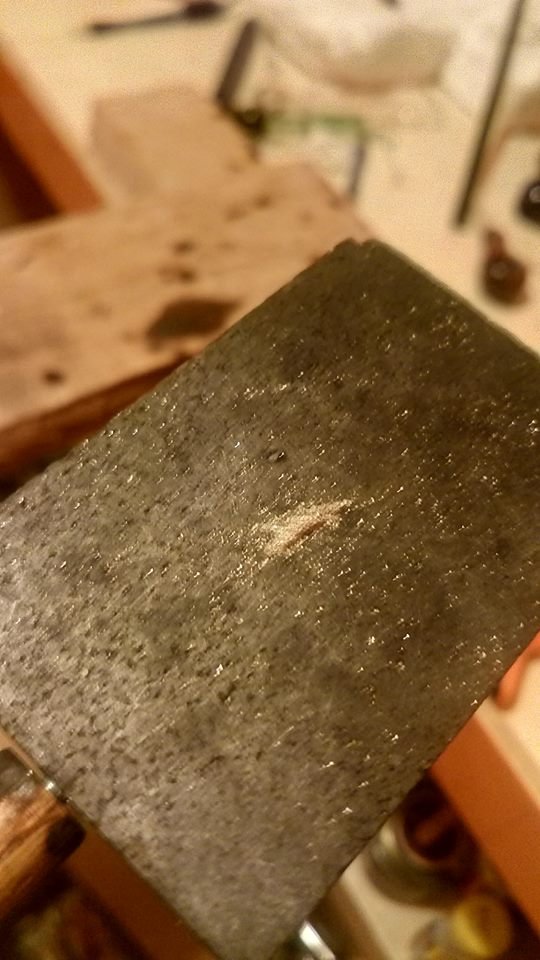
Using a razorblade, I gather the shavings that were spread across my graphite paddle, attempting to localize most of them in a pile. The stuff left on the paddle will get squished into pipes here and there while I work, which is great because I love the imbedded silver flakes look.
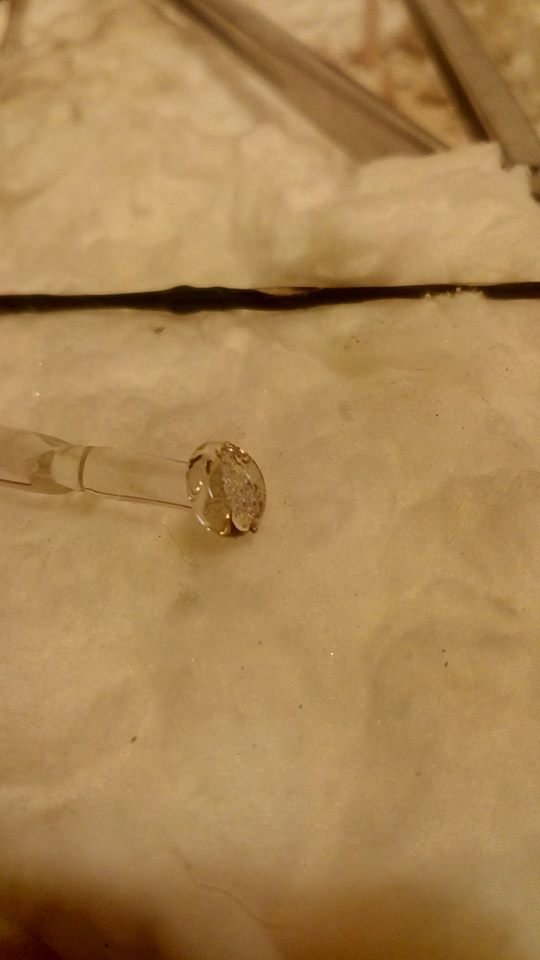
All it takes is getting a smaller diameter punty, or glass rod, hot on one end until it's molten. Using this molten ball of glass, pick up as much of the silver as possible, just by pressing down. I then turn my flame down to what's called a reducing flame, or propane rich, to help melt the silver onto the glass without vaporizing it. It's with this step that many struggle with gold. The picture above is of a freshly made punty, one not yet used to fume. It's just shiny with the silver ready to be burnt.
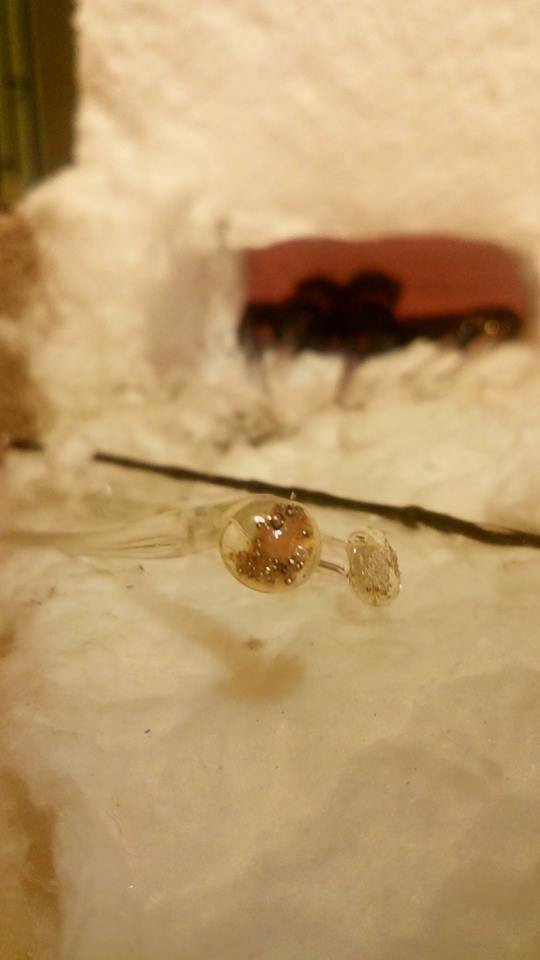
This gives you an idea of what a used punty would look like, which is much different. There's still quite a bit of silver in it, only now in the form of little beads. The silver beads up when it gets hot and has a habit of embedding itself in the glass. The glass worker often has to do little tricks to squeeze the silver back to the surface.
Fuming is hard to show in cellphone pictures because I don't have what's called a didymium lense. It's made with a special type of glass, that my glasses also happen to use, that filters the sodium flare that comes off the glass when you work with it. This makes it so you can work glass, or just look at someone working glass without pain. They also aid GREATLY in sight, as the flare is super bright and makes it impossible to see. For this reason, I don't have pictures of the fuming process, but I'll explain it as best I can.
You start with what's called a slightly reducing flame, which means it just has a bit more propane than oxygen. I use a smaller flame, but not so small that it doesn't have any force behind it. You want a flame with enough force to push the silver onto your piece, but not too hot or oxidizing or the silver will just burn up. Too big a flame also makes it hard to control where the silver goes, which makes it harder to get a heavy fume.
The glass needs to be reheated before it's fumed, generally just to glowing red in a bigger flame. After that, I reduce to what I call my fuming flame and fume. I now keep my fuming rods in the opening of my kiln, to keep them warm. I've had it happen too many times where I hit one with a flame and the end with the silver flies across the room from the shock.
Even with the help of the kiln, I still introduce it slowly to the flame, way at the tip. Keep the piece hot while you do this. Eventually, while moving the silver in and out of the flame, move the infused glass towards the candle, which is a white internal part of the flame, it's pretty distinct when you're on the torch. The hottest part is generally just after it. As you do this, wiggle the silver ball in and out of the flame. The silver will heat, and spritz off. It quickly stops, which is why it needs wiggled in and out of the flame. I move it in, watch the glittery spray shoot off until it stops them remove it, rinse and repeat until you've reached your desired level. It'll start off yellowish but you can take it to a mirrored finish if you want.
After, it's important to wash it in, or cook it in. Terms depend on the artist but the end goal is the same, you're attempting to melt the silver into the glass better without burning any off. I use a larger reducing flame for this, just until the silver glows and then I remove the whole thing to the flame. Do this a few times and the silver should stick, for at least a little while. If you try hard enough and don't encase any, you can burn any amount of silver off with a torch.
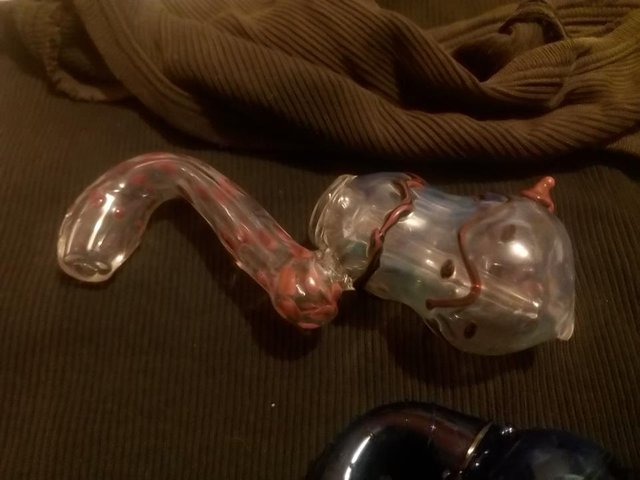
The different effects you can see in glass fumed pipes come from different techniques. Many utilize clear glass in the form of dots, lines and squiggles. This encases a small amount of silver, which makes for interesting effects. Layering fume layers with clear dot and line layers can make for an amazing piece with not much tools. A lot of the work is actually done with the flame, by a process called flame striking. Through repeated heatings and coolings with alternative oxygen or propane rich flames, you can get interesting effests. Some artists water strike, literally sticking their piece in a vat of water, removing it just before it explodes to bring out more colors. I've not tried this, as I'm scared, honestly. Many artists use silver shavings imbedded in glass, which I enjoy myself. The silver fumes the glass around it and it looks really pretty too, like the glass is glittery.
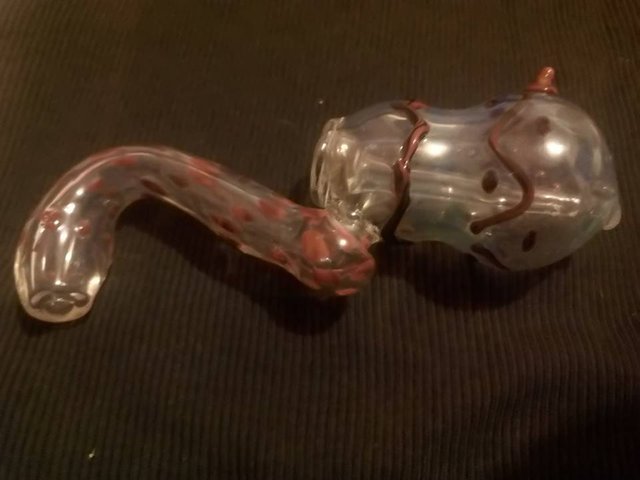
I'm finally getting some of this figured out, and honestly what's in the kiln right now is way better than what I shared in this article. I'm just starting out, but I'm happy with my start as far as fuming is concerned. I've learned a lot reading this (http://www.talkglass.com/forum/showthread.php?50213-Fume-Shots) forum thread and the other about techniques on the same website. I'm going to share some of the artists from that thread, as well as some others that I find notable for their work. While I'm getting a hang of fuming, I don't do it justice and feel it's worth sharing what really can be done.
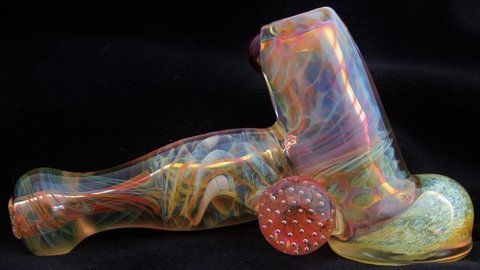
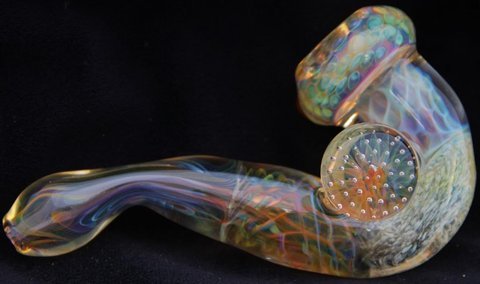
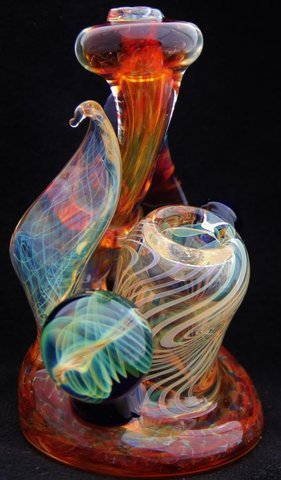
These are from that thread, belonging to an artist by the handle "dOprah Winfrey". They're pretty amazing at fume work and show a pretty good example of just how nice it can be.
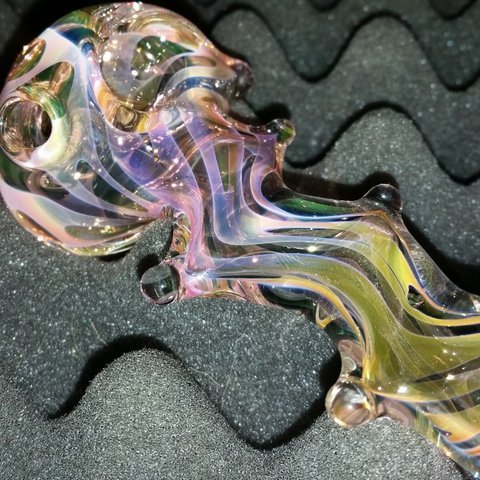
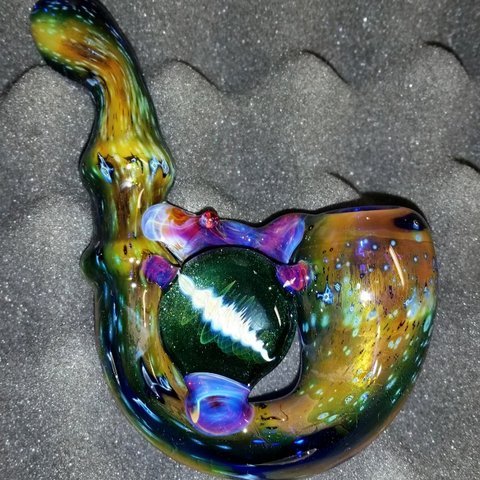
Also from that thread, this is the user "Cheese nip"s work. I dig that they use the embedded silver shavings like they do in that space themed sherlock above. There are many more photos from these artists to be found at that thread I linked above. I'd spend days trying to post all the photos from that thread. These are not all the artists, or even the best ones. I clicked around looking for random awesome ones, I just knew this thread was the place to go for great fuming examples. Any page was bound to have something, and I wasn't disappointed. I highly recommend anyone that enjoyed these images go check out that thread.
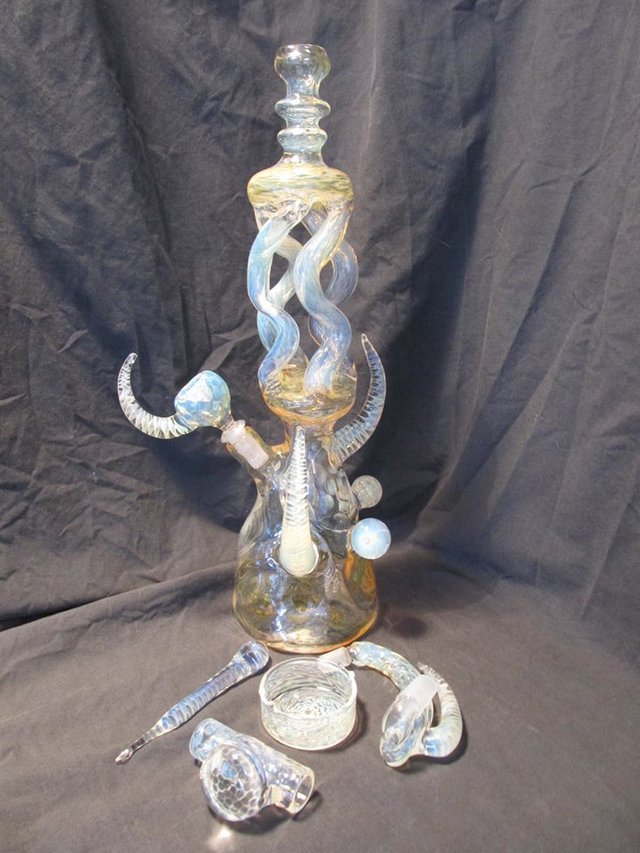
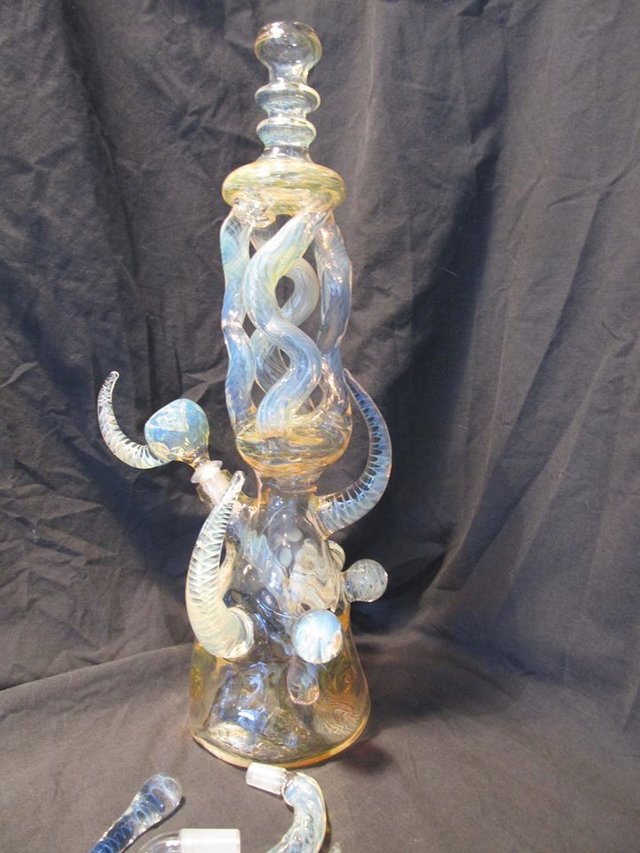
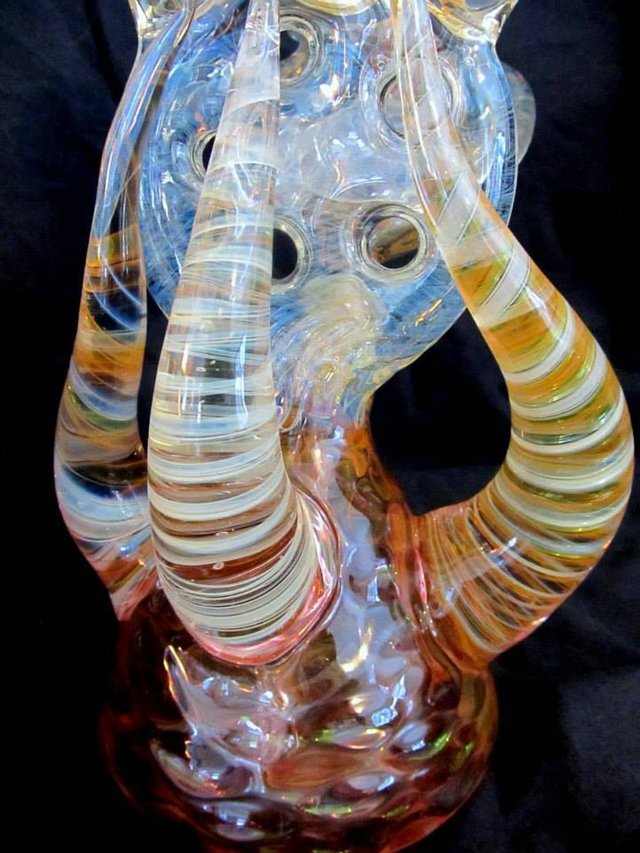
Here's one of my favorite artists, someone out of Canada that I respect by the name of Redbeard. He does a show on Pot TV showing glassblowing in real time, and I appreciate his style. He's got a lot of experience and has taught me a lot in just the short time I've been blowing. He also introduced me to Vagabond, another favorite of mine known for fun monsters with rolling eyes. The photos above are of bongs he made on the show, in an attempt to teach the internet world how to fume with silver. He's got a knack for taking simple things overboard and making it happen, which makes for interesting pieces like the ones above.
This wouldn't be a post about fuming without Bob Snodgrass. He invented fuming accidentally when he put a silver tool in the flame, causing it to fume a dragon piece he was working on. He almost quit, but continued and sold it to a friend. She came back to him to share it had changed colors, and he realized he stumbled on something great. He developed the technique and spread it everywhere, which I admire and respect.
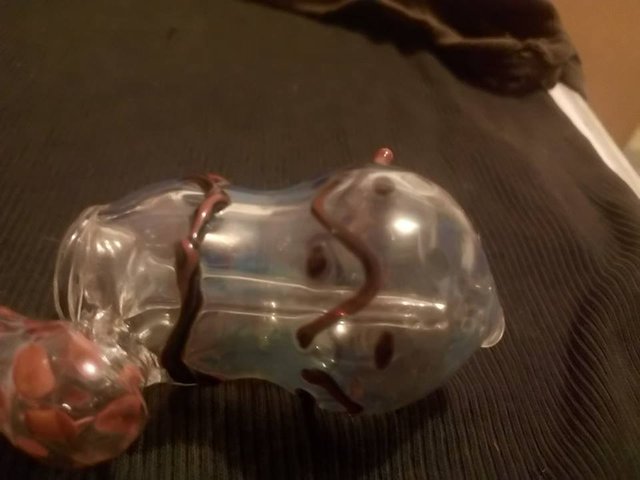
So there you have it, a little insight as to how glassblowers make that magic color changing happen. While it seems simple, I've found it's not. There's little tricks you learn from experience to make it that much cooler and nicer, and I'm working on learning as many of them as I can. The only technique I've liked as much as fuming is working with stringers, which goes hand in hand. As an anarcho-capitalist, I will say that it's pretty cool that I get to imbed silver into glass as part of my job.
Amazing. Beautiful colors and creative narrative. ☆☆☆☆☆😎
Thank you!
Are you able to recycle your glass? What would adding silver to it do?
If I had a blast furnace and a crucuble, I could do so easily. It's not impossible with my current setup to reuse glasss, it's just time consuming and costly in fuel.
As for adding silver to glass, there are colors with silver mixed in and embedded, that fume as you work with them. Totally possible and from my understanding makes for cool glass